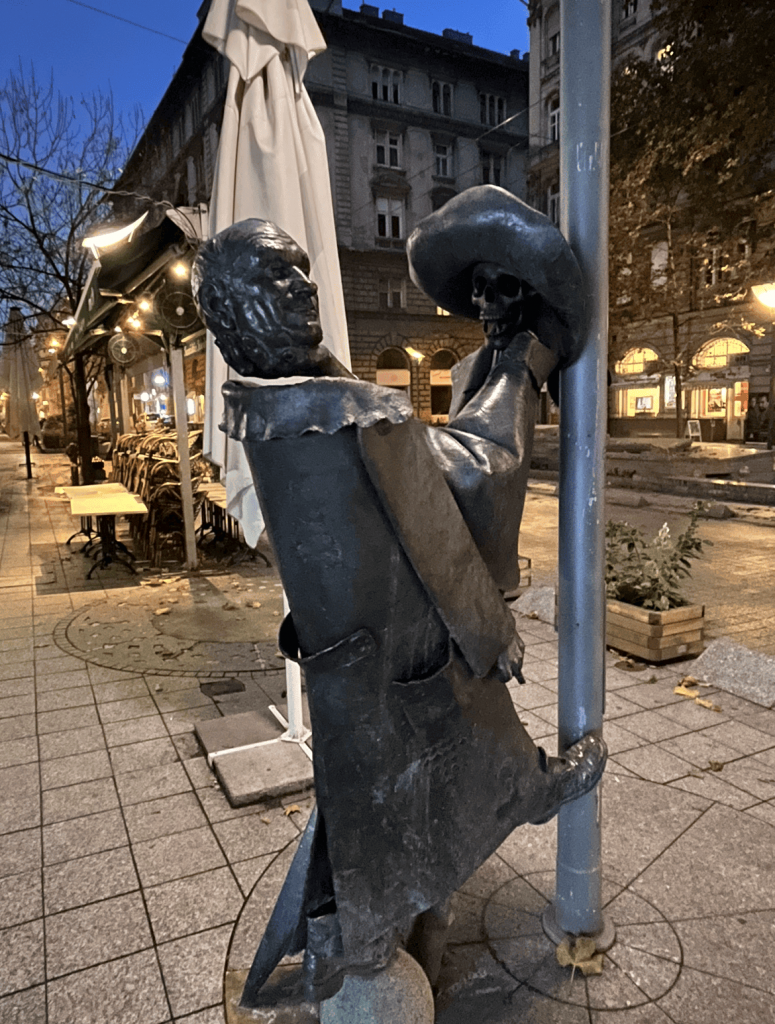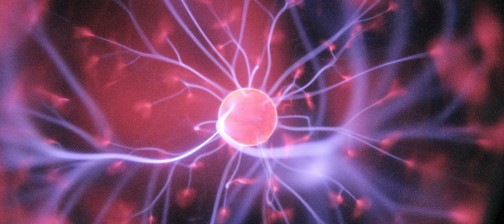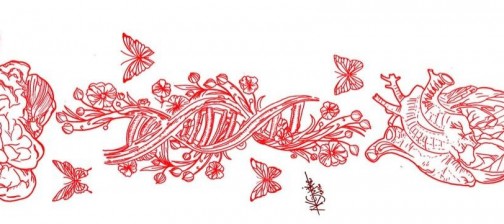By Mark Kollar
As we walk on the Danube Corso, running alongside the banks of Danube River, towards the magnificent Parliament, we can spot the statue of Sándor Petőfi, a famous Hungarian revolutionary poet of the 1848-49 Hungarian Revolution. Petőfi, considered to be one of the most recognized poets of the country, wrote a number of patriotic poems and proses, that encouraged the Hungarian people to rebel against the Austrian Habsburg establishment and fight for their freedom (or, at least, autonomy within the empire).
He also picked up an arm and fought in many battles during the revolution, however, after the Russian Empire joined the war, he eventually died in a battle in Transylvania, in today’s Romania. The statue at the Danube River pays tribute to this fallen Hungarian hero, as he is staring at the Danube, maybe to find some inspiration for one of his poems. The statue, located near the Parliament, close to the exit of Metro Line 2, is made of iron and is a quite big one.
Another interesting, but smaller, statue is located near Széll Kálmán tér, in the heart of Buda. It is a small statue of Mekk Mester, a famous Hungarian handyman fairy tale character, who appeared in a popular 1970s television puppet series. The statue, as the name implies, depicts the character of Mekk Mester, with a scarf, made by an unknown person, added to the already existing piece of art.
Picture by Mark Kollar
The Mekk Mester statue is one of the many Kolodko statues. Mihály Kolodko, a Ukrainian-Hungarian sculptor, makes small statues in Budapest, and places them alongside the known spots of the city, such as the one in Széll Kálmán tér. These statues are typically small, often not bigger than 15 cm, and are frequently representing Hungarian movie characters, animated figures or just simple themes, like snails climbing a rock. Kolodko’s real name was unknown for a long time, as if he was the Hungarian Banksy. Many people have been inspired by his work, and it is well-known throughout Budapest. Until 2018, there was no information about the creator, only the lovely statues found in Budapest. However, he was eventually brought down by one of his statues, which was identical to one of his other works, made in his hometown of Ungvár, in Transcarpathia, Ukraine.
A third piece of art can be found near Szent István Basilika. It represents a general standing in his arms and his uniform. This is more of a classical statue: it is real-sized, not stylized, and can be spotted pretty easily, because is in the middle of the street. The gentleman has a mustache and watches the onlookers with a strict exe. He has badges on his chest, so he has to be some important and successful person in history.

Picture by Mark Kollar
Finally, there is another statue, located on the so-called Hungarian Broadway, Nagymező utca. This represents a skeleton holding the head of popular Hungarian 20th century comedian, Géza Hofi. He often joked about death, so this is why symbolically his head is in the hand of the “devil”. The statue is a nice piece of art; it is painted black, resulting a dark feeling to the angel of death. It is also somewhat tragicomic, since Hofi’s head is smiling in the hand of death, so he is not horrified, but instead the demise makes him laugh.

Picture by Mark Kollar





